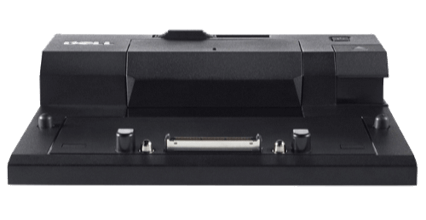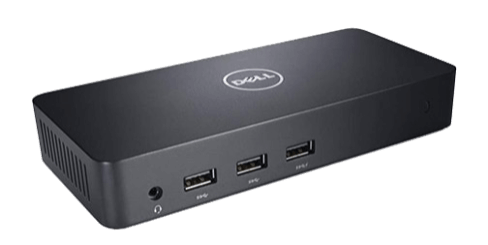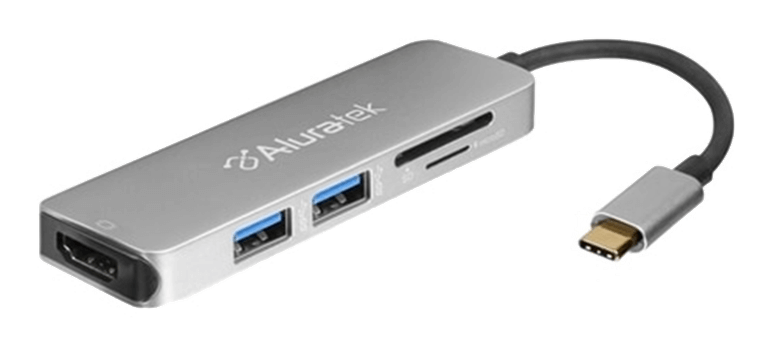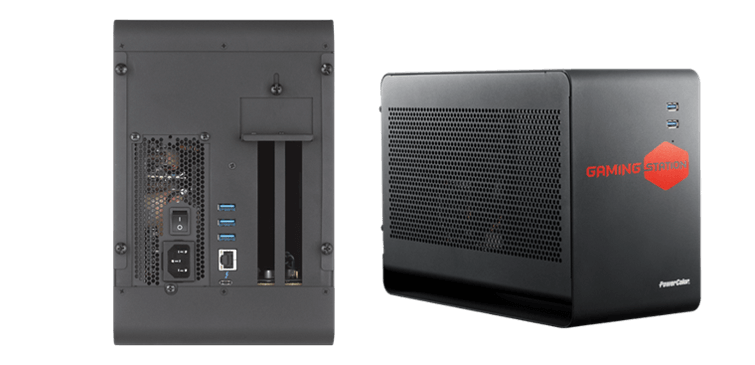
A lot of organizations today choose to purchase laptops instead of old-fashioned PC towers and with that comes the question of how to run multiple monitors. Most folks at our office run 3 displays. I like to run 5 and today you will find out how you can expand your laptop real estate all the way to 7 screens while using a single cable to both charge and connect your laptop to external LCDs.
Most Common Types of Laptop Docks:
Port Replicator
Max Display Count: 4
Charging: 200W+

Both Lenovo and Dell incorporate a proprietary docking station system. These have been rock solid options for years as these port replicators are ‘dumb’ devices. This is a good thing. A true port replicator relies solely on the laptop’s built in components to render graphics and transfer data.
This means the HDMI port that is connected to your GPU is being utilized even if you are not plugging in the monitor directly to it.
This is a huge win for anyone using GPU-intensive workloads such as CAD or video editing and is unique to this style of dock. A port replicator also utilizes USB lanes built into the laptop’s chipset as opposed to a USB hub, which provides yet another advantage in performance.
Sadly, these solutions are rapidly becoming scarce.
USB Type A HUB
Max Display Count: 4
Charging: 0 W

This is my least favorite solution from this list.
And no, this is not a docking station; it really is just a hub.
We tried 4 different 5-star-rated USB docking systems from different manufactures here at PEI. Expect CPU utilization of 10-15% always. Expect to restart your PC once a week to make it work. Take these inconveniences x10 employees and someone’s dock is broken twice a day, every day.
It appears these solutions receive high ratings by a combination of consumers enthralled by the prospect of adding two additional displays to their laptops for the price of a large delivery pizza as well as ‘paid reviewers’ who receive a complimentary product in exchange for a positive review.
Back to the technical aspect: these devices come with a multiplexer chip for USB that may or may not play nice with latency sensitive applications (think a mouse) as well as power constraints (think a hard drive). Name brand devices follow the USB standard and add a multiplexer chip for every 4 USB ports, but beware of unknown brands who skimp on this–it’s a very common issue these days as the USB HUB silicon chip price nears 4 bucks.
The additional display capability beyond what your laptop can normally support comes by means of USB Graphics card. That’s right, the HDMI port from your laptop does not magically transfer data over USB. Not only does the USB graphics card completely disregard the presence of the GPU integrated in your processor, it also fails to utilize a dedicated GPU if you have one. On the flip side you still can use the laptop’s built-in HDMI and/or display port in order to add 2 additional displays.
USB Type C HUB
Max Display Count: 4+
Charging: 200 W + (only Dell)

Almost everything about this ‘dock’ is the same as the USB Hub. The main difference is charging your laptop IS possible this time around. Again, Dell comes to mind with their docking station packaged with a 240W charger in the box. Dell’s solution is proprietary however and may not work with all devices. Also note the USB TYPE C connector is the same as thunderbolt, so the fact your laptop does have a USB C port does not mean you have thunderbolt.
Thunderbolt 3 External GPU
Max Display Count: 7+
Charging: 87W (this model)

The latest and greatest, (and the biggest) with the price to match. Pictured here is a Powercolor Gaming Station which is a Thunderbolt 3 enclosure for a full-size graphics card (think 4 cereal boxes put together size wise).
I happen to populate mine with a Nvidia GTX 1080Ti left over from my Bitcoin mine, but anything will do the job, really. A 50$ GPU provides 10x or more performance of a USB HUB-style dock and does NOT use your CPU, at least not 15% of it.
If you have a Thunderbolt 3 port, preferably a 40GBps one, this is the best solution performance wise. Naturally this is also the most expensive of the bunch, even if you don’t count the GPU cost and don’t mind the ridiculous size of the box that really doesn’t show in the picture. This is also an eyebrow raiser if you are trying to convince your purchasing manager the ‘gaming station’ is a required item for your new laptop.
As a bonus, most Thunderbolt 3 EGPUs work on a Mac and are hot plug capable for both PC and Mac. Another nice feature is the absence of a power brick–my unit utilizes an ATX style power supply that accepts a normal 3 prong cable instead of a wall wart.
What GPU do you need?
Modern GPUs support 4 displays in addition to your laptop screen. You can go as high as 6 displays (in addition to a laptop screen) if you pick an ancient Radeon 5970×6 GPU. The specific EGPU case I picked is a Powercolor Gaming Station and again, while it did raise some eyebrows at the purchasing department, having a single cable connection to external GPU that also charges my XPS15 at 87 Watts is my new favorite gadget.
In case you are wondering, 87 Watts is what a modern MacBook pro requires to charge at full speed. Interestingly enough, my XPS 15 9570 thinks it is being charged at 65 Watts only; however this is not a real concern as the 45 Watt Nvidia 1050 GPU is off when the dock is connected, leaving plenty of room for 0-100% charge in under 2.5 hours which is only slightly slower than a 130 Watt charger included with my laptop.
Final Thoughts
The obvious omission here is the Razer Core. I really wanted to love both variations the Core, but even at half the size, they are double the price and neither will charge my laptop; your results may vary as Dell and HP specifically are notorious for including proprietary handshake protocols with their chargers.
This technology became widespread about 3 years ago and there still are ‘kinks’ to work out: only 2 out of the 5 ports on my EGPU are suitable for Mouse and Keyboard. This is typical of all current Thunderbolt EGPU units on the market–half of which utilize TI83 chipset.
Reliability has been great for my unit and I’ve had no crashes or issues with it. Hot plug does require a nudge every now and then (power off and on the unit, not the laptop).
Overall, I’d recommend the EGPU solution to anyone who can stomach the price and real estate it requires.
Footnote
Quick disclaimer here, we don’t do sponsored content. The Powercolor EGPU happens to be the cheapest solution on the market at the time of writing that is able to provide wired ethernet, 4+ USB ports and 87 Watts of power. There are plenty of external GPU docks out there and a great site specifically dedicated to this subject is available here, which I used to choose my dock.
JacobR, Systems Support Engineer




